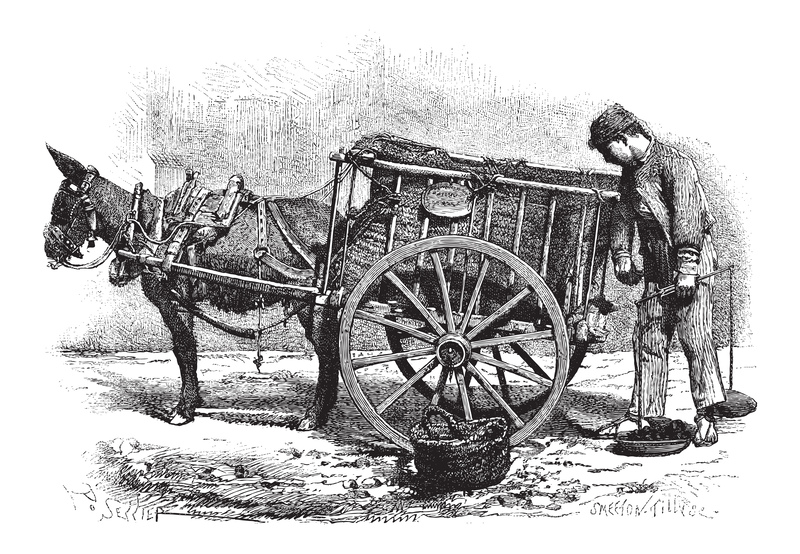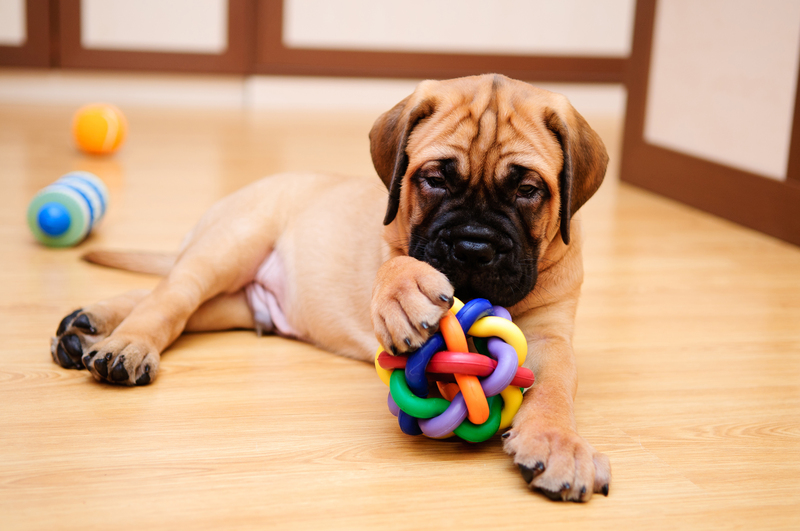Mindful Living Tips for Ongoing Clutter Control Post Clear-Out
Clutter seems to have a curious power over our lives: distracting, overwhelming, and weighing us down more than we realize. If you've recently conquered a successful clear-out at home or work, congratulations! Yet, the true challenge lies not in the initial enthusiasm but in maintaining an organized, mindful environment. This comprehensive guide presents mindful living tips for ongoing clutter control post clear-out --enabled by habits, mental strategies, and organizing tools that transform busy spaces into tranquil havens.

Why Does Clutter Reappear After a Thorough Clear-Out?
Many people feel a surge of lightness and accomplishment after decluttering. However, the relief can ebb away when stuff slowly creeps back in. Why does this happen? Here are a few common reasons:
- Lack of sustainable routines for managing new and existing belongings.
- Emotional attachments resurging, making it tough to maintain boundaries.
- Underestimating how quickly small items accumulate.
- Not having effective organizational systems in place.
Mindful living and clutter control are ongoing processes. Let's discover how adopting a mindful mindset and daily habits can keep your spaces clear, your mind peaceful, and your routines efficient.
The Foundation: Mindful Living and Clutter Control
At its core, mindful living is about being present, intentional, and conscious in your actions and surroundings. This approach transforms clutter control from a stressful chore into a meaningful daily practice that promotes serenity and satisfaction.
What Is Mindful Living?
Mindful living encourages you to engage with your environment, belongings, and habits with awareness and intention. This means considering what you allow into your space, staying tuned in to your feelings around objects, and opting for routines that support clarity and calm.
Benefits of Ongoing Clutter Control through Mindfulness
- Mental clarity--less distraction and overwhelm.
- Boosted productivity through organized environments.
- Reduced anxiety by eliminating mess-induced stress triggers.
- Greater appreciation for items you truly value.
- Enhanced well-being and sense of accomplishment.
10 Mindful Living Tips for Post Clear-Out Clutter Control
Let's dive into proven strategies and mindful living habits that will empower you to keep clutter away long after your initial clear-out.
1. Adopt a "One In, One Out" Rule
This deceptively simple practice means that when a new item enters your space--a pair of shoes, a kitchen gadget, a book--something else must leave. This mindful approach to consumption avoids re-accumulation and invites you to be intentional about every addition.
- Tip: Create a visible donation or recycling bin for things you let go, making it easy to maintain this habit.
2. Schedule Regular Decluttering Check-Ins
Post-clear-out, don't leave it to chance! Mark your calendar for a regular review of clutter hotspots--think entryways, closets, kitchen counters. Even 10-15 minutes once a week is effective for ongoing clutter control after a big clear-out.
- Set an alarm or digital reminder for your declutter session.
- Keep decluttering supplies handy: bags, boxes, labels.
3. Create Designated "Clutter Zones" (and Clear Them Daily)
Some items--the mail, keys, backpacks--will inevitably enter your home every day. Place a beautiful bowl, basket, or tray as a temporary holding zone, but commit to clearing this area at the end of each day to prevent overflow.
Pro Tip: Choose clutter zones near your main door for natural convenience.
4. Practice Mindful Consumption
Before purchasing or bringing home new belongings, pause and ask yourself:
- Do I truly need this, or is it an impulse?
- Does it align with my lifestyle and current possessions?
- Where will it "live" in my space?
By shopping with intention, you'll dramatically reduce new clutter formation.
5. Employ the "Touch It Once" Strategy
Instead of setting something down, resolve the associated action immediately. For instance: open your mail--immediately recycle junk, file bills, and respond to invites. This limits the creation of "clutter piles" and saves time in the long run.
6. Maintain Visible Spaces First
Flat surfaces like countertops, coffee tables, and entryway shelves often attract the most clutter. Start with these high-traffic zones to give your home an orderly feel even if hidden spaces aren't perfect.
- Make clearing visible areas a daily priority--it's motivating and instantly stress-reducing.
7. Digitize Paper Clutter
One of the biggest ongoing clutter sources is paper: receipts, flyers, warranties, children's art, and mail. Use apps and scanners to digitize what you need and establish a regular shredding or recycling routine for the rest.
- Use cloud storage, labeled folders, or dedicated apps for archiving.
- Snap photos of sentimental paper items and let the originals go.
8. Encourage Household Participation
Clutter is a shared phenomenon--so clutter control should be a family or roommate effort! Set up a simple routine for daily or weekly clean-ups and communicate the value of a tidy, peaceful home to everyone involved.
- Involve kids with age-appropriate organizing games.
- Divide responsibilities for shared areas.
9. Rethink Storage Solutions Mindfully
Most of us don't need more storage--just better use of what we have. Invest time in creative, labeled, and accessible storage systems that encourage putting things away immediately.
- Use baskets and bins sized for what you need, not more.
- Label shelves and containers for efficiency.
10. Reconnect With Your "Why" for Clutter Control
Mindful living flourishes when rooted in personal meaning. Regularly remind yourself why you want to maintain an uncluttered space. Is it for peace? Productivity? Family harmony? Let your motivation inspire sustained attention to ongoing clutter control.
How to Build a Long-Term Mindful Clutter Control Habit
Identify Clutter Triggers
Whether it's shopping when bored, procrastinating tasks by tidying, or struggling with letting go of items for sentimental reasons, everyone has unique clutter triggers. Noticing these patterns is the first step to mindful change.
- Keep a journal to track when and why clutter reappears.
- Pause to check in with your emotions before buying or keeping an item.
Use Mindful Pause Techniques
Whenever you're about to put something down "just for now," take a moment:
- Ask: Does this have a home? If not, can I give it one?
- If it's outgrown its purpose, can I thank and release it?
- Will leaving this here contribute to visual noise?
Celebrate Small Wins
Change is built on consistency, not perfection. Every day you clear a surface, empty a bin, or stick to your "one in, one out" rule, recognize your progress. This builds positive momentum for ongoing clutter control and mindful living.
Top Tools and Resources for Effortless Ongoing Clutter Control
Smart Organization Supplies
- Clear containers--Let you see what's stored and where.
- Labels and tags--For everything you box or bin.
- Stackable shelves--Maximize vertical space.
- Hooks and wall organizers--Keep frequently used items accessible.
Digital Aids for Paperless Living
- Scanner apps (e.g., Adobe Scan or CamScanner)
- Cloud drive services for file archiving
- To-do and reminder apps for regular declutter check-ins
Mindful Mindset Resources
- Books on minimalism and mindful living (e.g., The Life-Changing Magic of Tidying Up)
- Guided meditations focused on letting go and present-moment awareness
- Podcasts about intentional living and clutter control
FAQs About Mindful Living and Ongoing Clutter Control
How can I stop feeling overwhelmed by constant decluttering?
Start small, and focus on one area at a time. Embrace "good enough" rather than perfection. As you build mindful routines, clutter control becomes second nature, not a never-ending task.
Can mindful living help with emotional attachments to items?
Absolutely! Being present with your feelings allows you to honor nostalgia without being led by it. Thank sentimental items for their role, and decide if their memory or essence can be preserved in a photo or keepsake instead.
Is it possible to involve children in ongoing clutter control?
Yes. Make it playful! Color-coded bins, reward charts, and sorting games can help kids see decluttering as fun, not a punishment. Model mindful living practices by narrating your choices ("I'm letting this go because it's not useful to us anymore.")
What if other people in my home aren't tidy?
Lead by example and communicate gently. Set shared goals, suggest family declutter days, or assign clutter zones to each person. Patience and persistence help build a household culture of mindfulness.

Bonus: 5-Minute Daily Mindfulness Ritual for Lasting Clutter Control
Commit to a simple daily routine that combines mindfulness and thoughtful organization:
- Take a deep breath and scan your main living area.
- Ask yourself: What do I notice? What feels out of place?
- Spend just 5 minutes restoring order--sorting mail, folding throws, or returning items to their "homes."
- Thank yourself for this small act of mindful care.
Over time, this ritual will train your brain to recognize and address clutter before it builds up. It's not about perfection; it's about consistent, loving attention to your environment.
Conclusion: Embrace a Lifetime of Mindfully Controlled Clutter
Clearing out is a powerful beginning--but mastering mindful living tips for ongoing clutter control post clear-out is what brings lasting peace, clarity, and joy to your space. By developing intentional habits, organizing systems, and an aware mindset, you protect the calm you worked so hard to create. Remember, ongoing clutter control is not a burden, but a gift you give yourself and your loved ones, allowing beauty, creativity, and serenity to flourish at home and beyond.
Ready to go further? Choose one of these tips to implement today--and enjoy the transformative power of mindful, clutter-free living, every single day.